When a journal adds a new associate editor, that change means more for readers than just a tweak to the masthead. New associate editors bring new experiences, new perspectives, and new ideas to their publications. Get to know some of ACS’s latest editors and learn what unique gifts they’ll be bringing to their respective journals. […]

Iryna Zenyuk, ACS Applied Energy Materials
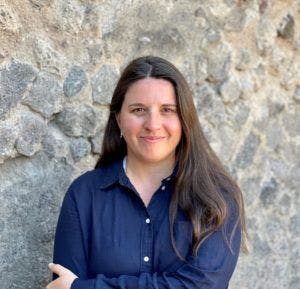
What is your research focus? What initially attracted you to your field?
My research is focused on using electrochemical techniques to enable the decarbonization of energy conversion and storage systems. Renewable energy technologies based on hydrogen are promising candidates to enable clean grid, transportation, and industrial sectors, as they have zero emissions and can use renewable and intermittent energy. I work on both polymer electrolyte fuel cells and electrolyzers, as well as Li-ion batteries. I did my Ph.D. at studying electric double layers at Pt- electrolyte interfaces with application to fuel cells. I wanted to do a Ph.D. in fuel cells as even back then, I understood the challenge of decarbonizing the energy sector and the need for novel, clean, cost-effective, energy-efficient solutions.
What do you hope to bring to your journal?
I hope that my expertise in fuel cells and electrolyzers can serve the journal well. ACS Applied Energy Materials is an ideal place for energy conversion and storage technology paper submissions, as it allows for some more applied approaches to be published, and this is, I believe, where we see a lot of innovation. I am excited to see more papers where the know-how/empirical approach is transformed into a science, for example, catalyst integration into actual devices, as only with rational design will we be able to advance the electrochemical technologies to market applications.
What are the major challenges facing your field today?
The major challenges for broad hydrogen technologies (fuel cells and electrolyzers) deployment include high cost, durability challenges, and material challenges. The cost and material challenges are interlinked as, in many cases, the use of precious metals (platinum, iridium, etc.) results in high capital costs. Fundamental and applied science and engineering can address these challenges through novel catalysts and support design. The durability challenge again can be addressed either with a system-level solution (clipping voltage of the cell, for example) or with a materials design solution. I am looking forward to paper submissions to ACS Applied Energy Materials, where the authors will address cost, durability challenges through novel materials designs and their integration into actual devices.
What do you think is the most interesting and/or important unsolved problem in your field?
I think there are many interesting unsolved problems in my field. From the top of my head, I can list several. For example, shaped-controlled catalysts for oxygen reduction reaction demonstrated several times increased mass activities when measured in rotating disk electrodes, but this does not translate yet into performance within the actual device. A complex environment within the fuel cell somehow prevents these catalysts from reaching their full potential. In electrolyzer space, understanding the local environment within the iridium oxide catalyst layers for oxygen evolution reaction is still a challenge, as currently ionomer distribution, local morphology, IrOx oxidation state during operation, and two-phase flow within solution are all unknowns. By rationally designing catalyst layers for electrolyzers, we can dramatically reduce the device cost by reducing IrOx catalyst loading.
Do you have a recent paper in an ACS journal that you’d like to highlight?
Measurement of Contact Angles at Carbon Fiber–Water–Air Triple-Phase Boundaries Inside Gas Diffusion Layers Using X-ray Computed Tomography
ACS Appl. Mater. Interfaces 2021, 13, 17, 20002–20013
DOI: 10.1021/acsami.1c00849
I like this paper because it uses a neat way to extract internal contact angles within the gas diffusion layers (GDLs) for fuel cell applications. This is something that has not been done previously in the fuel cell community, and it is much needed as the internal wettability of GDLs dictates water management.
Anything else you’d like readers to know about you?
In my previous life, I was a professional chess player, now retired but would be happy to be challenged to a chess game during our annual ACS meeting!
***
Joelle Pelletier, ACS Catalysis

What is your research focus? What initially attracted you to your field?
Understanding how enzymes work, so we can modulate their activity. Enzymology; Biocatalysis; Enzyme kinetics; Computational simulations.
What do you hope to bring to your journal?
I hope to bring high-quality research on how enzymes/biocatalysts work and the harnessing of that knowledge to create new or improved methods of catalysis. Complex synthetic pathways that involve a variety of catalyst classes are exciting developments that we can promote. I will also strive for ACS Catalysis to include greater human diversity at all levels of the publication process, to publish the highest level of science with the greatest breadth of input and maximal outreach.
What are the major challenges facing your field today?
1) Creating a body of knowledge that will inform methods of artificial intelligence to accelerate innovation in biological catalysis.
2) Bringing down barriers between subdisciplines of catalysis to increase the scope of discovery.
What do you think is the most interesting and/or important unsolved problem in your field?
The development of uniform metrics to assess the quality of data in enzyme catalysis. Contrary to most fields of chemistry, biochemical data does not conform to specified norms, nor is it easy to think of doing so for reasons that are inherent to the immense variety and complexity of biology. Nonetheless, high-quality comparables lie at the root of knowledge expansion. Efforts are underway in the international metrology community to propose metrics for reporting results of enzyme catalysis. I will work to ensure that ACS Catalysis stays abreast of these and supports their development.
Anything else you’d like readers to know about you?
I look forward to meeting and discussing geeky science with all those who are passionate about biocatalysis.
***
Hee-Tae Jung, ACS Sensors
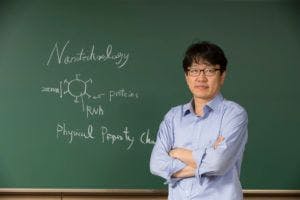
What is your research focus? What initially attracted you to your field?
Molecular assembly – Nanomaterials and surface nano-patterning – CO2 conversion, HER and NRR catalysts – Gas sensors – Nanomaterials for climate change
What do you hope to bring to your journal?
A bridge between academia and industry in these fields, as well as making contributions to climate change issues.
What are the major challenges facing your field today?
Developing new types of nanomaterials to overcome the hurdles of conventional electrochemical sensors and metal oxide-based sensors.
What do you think is the most interesting and/or important unsolved problem in your field?
I hope to bring the development of high-performance metal oxide gas sensors at low temperatures and the development of high-performance lung cancer and virus sensors from human breath analysis.
Do you have a recent paper in an ACS journal that you’d like to highlight?
Etching Mechanism of Monoatomic Aluminum Layers during MXene Synthesis
Chem. Mater. 2021, 33, 16, 6346–6355
DOI: 10.1021/acs.chemmater.1c01263
***
Andrew Marr, ACS Sustainable Chemistry & Engineering
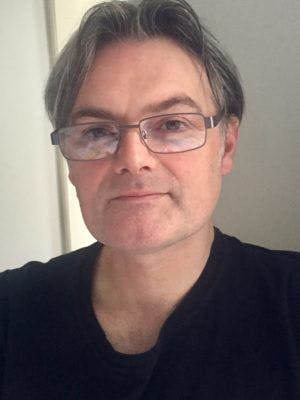
What is your research focus? What initially attracted you to your field?
My research focuses on catalysis for green and sustainable chemistry. This includes biocatalysis, organometallic catalysis, and artificial metalloenzymes. I also work quite a bit with ionic liquids. I learned about green and sustainable chemistry when I was doing postdoctoral research on hydrogenase models at the University of Nottingham (1998 – 2000). Martyn Poliakoff was expanding the green chemistry agenda in Nottingham, and the speaker program was amazing. My wife and I got to meet many of the pioneers of the field during that time, and we took some of them out for lunch or dinner. When we moved to Belfast, we were fortunate enough to learn about ionic liquids from Ken Seddon and join his QUILL research centerboard. Paul Kamer was also a good friend. He introduced me to artificial metalloenzymes.
What do you hope to bring to your journal?
I will help to maintain the excellent standards of ACS Sustainable Chemistry & Engineering. This journal covers a fast-moving area. I hope to help the journal keep up with the best technological advances in sustainable chemistry and engineering.
What are the major challenges facing your field today?
To transition all chemical and energy technologies to more sustainable alternatives. Solutions that serve all living things better than the existing paradigm. This is the biggest challenge facing humans and a core purpose of the journal.
What do you think is the most interesting and/or important unsolved problem in your field?
There are too many to count. One challenge that occupies us at the moment is the application of enzymes to energy technologies. The opportunity to grow components for electrochemical devices is fascinating.
***
Susan Latturner, Inorganic Chemistry

What is your research focus? What initially attracted you to your field?
My research focus is solid-state chemistry. I became interested in the field when I did an undergraduate research project at the University of Virginia, working on the intercalation chemistry of iron oxychloride. I enjoyed the synthesis and crystal growth of the host materials, as well as monitoring the structural modifications as organic guest species were added. However, my interest might have been inspired a decade earlier, as a 12-year-old, when I went to a New Year’s Eve party in Austria, and there was a person doing molybdomancy. (They hand you a slug of tin, you melt it over a flame and drop it in water, and they tell your fortune from the shape into which it freezes.) I don’t remember the divination, but I really liked the molten metal. It turns out that growing things out of molten metal was my future.
What do you hope to bring to your journal?
I’m looking forward to facilitating the publication of new work in materials chemistry and publicizing work that is of particular interest to the field.
What are the major challenges facing your field today?
A major area of research is the development of materials to address energy needs in ways that mitigate the impact on the environment. It’s not clear if this will be best addressed by incremental improvements of existing compounds or by complete paradigm change. For instance, small changes in lithium-ion battery materials have led to greatly improved performance, but changing to a different platform may lead to even better properties and also eliminate the sourcing issues with lithium and cobalt. The discovery of new materials that can lead to dramatic improvement is difficult (as John Corbett said, it’s “difficult to predict the unimaginable”). But paradigm shifts can happen with a combination of exploratory synthesis, new synthetic techniques, and computational work to aid in materials discovery.
What do you think is the most interesting and/or important unsolved problem in your field?
A big problem in the synthesis of extended inorganic solids is the lack of understanding of reaction mechanisms. We lack the fine control of bond-making and bond-breaking that organic chemists have in their reactions. It is therefore difficult to tailor the structure and properties of our products. But this is becoming increasingly addressable with advances in characterization techniques which allow for in-situ measurements as reactions progress. Improved understanding of reaction intermediates may enable us to modify our syntheses to target the desired product.
Do you have a recent paper in an ACS journal that you’d like to highlight?
Unexpected Hydride: Ce4B2C2H2.42, a Stuffed Variant of the Nd2BC Structure Type
Cryst. Growth Des. 2021, 21, 9, 5164–5171
DOI: 10.1021/acs.cgd.1c00521
We used neutron diffraction to detect interstitial hydrides that were inadvertently introduced during the flux growth of a Ce/B/C compound. We were looking for carbide interstitials, but the neutron diffraction data clearly showed they were hydrides. Given that information, we increased the yield by using a hydrocarbon (anthracene) as a reactant. (This is the extent of the organic chemistry we do.)
***
Yu Tang, Inorganic Chemistry

What is your research focus? What initially attracted you to your field?
My research interest is functional coordination compounds, mainly focusing on the design, synthesis, functional and stability control, and application of rare-earth functional complexes and materials. In recent years, we have carried out systematic researches on the key scientific issue of regulating the function and stability of luminescent materials based on the rare-earth complexes at the molecular level. And the rare-earth complexes based luminescent materials can be used in the construction of intelligent optical coding materials, two-photon biological probes, and the assembly of stable and highly efficient inorganic-organic hybrid perovskite solar cell devices. Those researches have enriched the research content of coordination chemistry and have significant meaning for the synthesis of new rare-earth luminescent materials and their high-value applications. It was the curiosity to explore the unknown world and the interest in coordination chemistry that initially attracted me to the field. In addition, what fascinates me with scientific research is the astonishment or awe, excitement or stimulation, motivation or impulse fed back to me by the experiment. I clearly remember that when I saw the crystal that I got after cultivating overnight was like a romantic ice flower, I fell in love with the creative and energetic chemical laboratory.
What do you hope to bring to your journal?
Discover more excellent works with high quality and articles with high citation potential, and attracting scientists with high academic levels to join the editorial board team would be my greatest wish. Of course, I also want to qualitatively define the relationship between all authors, reviewers, and editors, a long-term strategic partnership to create a harmonious and friendly atmosphere for our future exchanges.
What are the major challenges facing your field today?
For the past several decades, the application of rare earth luminescent materials has been the focus in high-tech fields, such as lighting, display, messaging, and so on. Rare earth complexes possess the functionally oriented molecular design property and excellent luminescent behavior, but these compounds are poorly stable for long-term use in devices. Even after encapsulation of the complexes in inert hosts, their stability remains questionable. I highly recommend that scientists in this field pay more attention to the development of more features and precise synthesis of ultra-stable rare earth complexes based on luminescent materials.
What do you think is the most interesting and/or important unsolved problem in your field?
The most interesting unsolved problem of rare earth luminescent materials is the transformation from academic research to engineering application. Achieving their industrial application is the true meaning of scientific research. I always imagine that rare earth luminescent materials will appear as a “superstar” to illuminate every corner of the global village. It’s meaningful but challenging.
***
Katharina Scherf, Journal of Agricultural and Food Chemistry
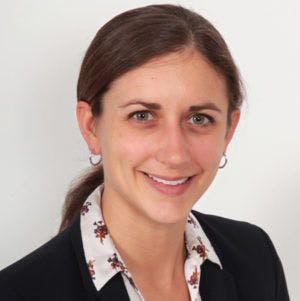
What is your research focus? What initially attracted you to your field?
My group and I develop new analytical strategies to study the complex interplay between structure, functionality, and bioactivity of food proteins in a multidisciplinary way. We analyze food proteins along the entire value chain from the plant to the food and beyond to understand digestibility, uptake, and potential immunoreactivity in the human body. These fundamental insights contribute to improved food security, food quality, and food safety. One of my main research interests is the analytical, immunological, and biochemical aspects of wheat-related disorders, including celiac disease, non-celiac gluten sensitivity, and wheat allergy. The most rewarding part of our research is that the results will help improve the quality of life for patients affected by wheat-related disorders.
What do you hope to bring to your journal?
As an Associate Editor of the Journal of Agricultural and Food Chemistry, I will be looking for high-quality submissions that advance the research field, for example, by introducing novel analytical methods into food science or by building bridges to other disciplines. My previous editorial activities will certainly be useful because I am already familiar with the entire process of handling manuscripts.
What are the major challenges facing your field today?
Wheat is one of the pillars for nutrition security worldwide, but the prevalence of wheat-related disorders is increasing. There is an urgent need to understand why this is happening, and this can only be achieved through multidisciplinary collaborations.
What do you think is the most interesting and/or important unsolved problem in your field?
Current gaps in knowledge are that digestibility and uptake of food proteins in the human body remain underexplored. We know very little about how undigestible food-derived peptides are absorbed, distributed, metabolized, and excreted. If we had this fundamental understanding, it would open many new possibilities to promote human health and prevent the development of food-related disorders.
Do you have a recent paper in an ACS journal that you’d like to highlight?
Among the papers from my group, I would like to highlight our work published in the Journal of Agricultural and Food Chemistry:
Wheat (Triticum aestivum L.) Breeding from 1891 to 2010 Contributed to Increasing Yield and Glutenin Contents but Decreasing Protein and Gliadin Contents
J. Agric. Food Chem. 2020, 68, 13247-13256
DOI: 10.1021/acs.jafc.0c02815
Changes in wheat protein composition due to breeding have been put forward as a potential reason for the increasing prevalence of wheat-related disorders. We studied agronomic characteristics, protein content, and gluten composition of 60 German winter wheat cultivars first registered between 1891 and 2010 grown in 3 years. Overall, the harvest year had a more significant effect on protein composition than the cultivar, and we found no evidence to support an increased immunostimulatory potential of modern winter wheat.
***
Mark S. Taylor, The Journal of Organic Chemistry
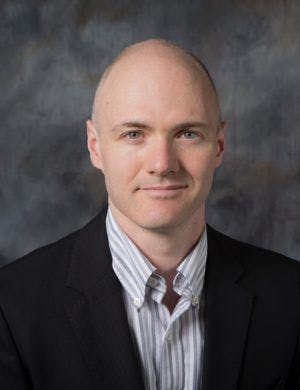
What is your research focus? What initially attracted you to your field?
My group’s research is aimed at discovering catalytic reactions of organic compounds and studying their mechanisms. We’re especially interested in learning how noncovalent or reversible covalent interactions can be used to influence selectivity in catalysis. As an undergrad, I was fascinated by the idea that the course of a chemical reaction can be controlled by changing the molecular structure of a catalyst. I had an opportunity to participate in catalysis research at an early stage, working with Keith Fagnou during his time as a Ph.D. student in Mark Lautens’ group at U of T.
What do you hope to bring to your journal?
I’m looking forward to the opportunity to get a closer look at diverse types of new chemistry and to learn as much as I can from the authors, reviewers, and editorial team at JOC. Respect and civility in the peer review process are important to me. Hopefully, I can help to promote and sustain those values in my role as Associate Editor.
What are the major challenges facing your field today?
We are facing a crisis of how to reduce the environmental impact of our activities while maintaining or improving the quality of life for individuals. Discoveries in organic chemistry can help to address this challenge by increasing efficiency in the discovery and production of medicines or materials and by identifying new types of chemical feedstocks.
What do you think is the most interesting and/or important unsolved problem in your field?
Developing site-selective transformations that function in complex settings is a problem that I find to be interesting and inspirational. Solutions to this problem offer new ways to modify the structures of biomolecules, conduct late-stage functionalizations of medicinal agents or secondary metabolites, and devise new chemical processes based on bio-derived compounds.
Do you have a recent paper in an ACS journal that you’d like to highlight?
Synthesis of Ketodeoxysugars from Acylated Pyranosides Using Photoredox Catalysis and Hydrogen Atom Transfer
ACS Catal. 2021, 11, 17, 11171–11179
DOI: 10.1021/acscatal.1c03050
This is a paper that I co-authored with my students Julia, Nicholas, and Daniel in ACS Catalysis. Despite wiping out two chirality centers, this reaction provides access to useful precursors to rare sugars from abundant starting materials, and the mechanism of the transformation is interesting. If you read our paper, I’d also recommend having a look at “A unified strategy to access 2- and 4-deoxygenated sugars enabled by manganese-promoted 1,2-radical migration”, a related study from Alison Wendlandt’s group at MIT.
Anything else you’d like readers to know about you?
Outside of work, I’m always looking for ways to stay active. I’ve been playing ultimate frisbee for around two decades and had the chance to compete at the World Masters Ultimate Club Championships in 2018. Recently, I have been enjoying running, (indoor) rock climbing, and cross-country skiing.
***
Mary Watson, The Journal of Organic Chemistry

What is your research focus? What initially attracted you to your field?
My research focuses on the development of transition metal-catalyzed reactions for organic synthesis. My group works on cross-couplings of sp3-hybridized electrophiles to deliver highly enantioenriched products with all-carbon quaternary stereocenters via stereospecific cross-couplings and to transform ubiquitous amino groups into a wide variety of new substituents. We are also developing enantioselective, copper-catalyzed alkynylations of cationic substrates. I was originally attracted to transition metal catalysis by the ability of transition metal catalysts to induce organic molecules to undergo transformations that are otherwise impossible. The ability of metal catalysts to control selectivity in these reactions also inspires me.
What do you hope to bring to your journal?
First and foremost, I am bringing my love of organic chemistry to the journal. Organic chemistry provides amazing opportunities for creativity and problem solving, and there is so much left to learn and discover. I am also bringing a deep respect for the scientists in this field and look forward to seeing their contributions. Finally, I hope to support the authors in bringing a high level of rigor to their publications.
What are the major challenges facing your field today?
Organic chemistry has evolved beautifully to encompass a great diversity of research from mechanistic analysis to synthesis of soft materials to chemical biology. However, there remains a lack of diversity among organic chemists, especially at the more senior levels. I am encouraged to see calls and recommendations for making our community more inclusive and diverse, but we have much work left to do. Our field also struggles with embracing a diversity of approaches. As organic chemists, we need options when confronting new synthetic challenges. Although it is tempting to want a single “best” strategy or solution for all contexts (and tempting to glom on to hot new research areas), we need a great diversity of solutions to chemical challenges because organic molecules themselves are diverse, ranging from simple starting materials to highly functionalized heterocycles to complex natural products. Finally, organic chemistry faces communication challenges. For example, much academic method development is directed towards gaining efficiency in the synthesis of potential pharmaceuticals, but historically there is limited communication between academic and industrial chemists. As a field, we also struggle with the sheer amount of results and data being communicated. How do we consume, digest, and most importantly utilize the vast amounts of information being reported to move to deeper fundamental understanding and greater rational design in organic reactivity?
What do you think is the most interesting and/or important unsolved problem in your field?
As a field, we still have so much to learn in terms of controlling reactivity. When we design a new reaction, we can often correctly predict the metal, class of ligand, and the need for other reagents. When we design a total synthesis route, we can choose well-precedented methods for each step. But so much of what we do is still empirical. Reactions that look great “on paper” often fail or require tens to hundreds of optimization experiments to achieve high yield and selectivity. This need for empirically derived solutions belies a lack of fundamental understanding of how to funnel molecules along the desired energy surface. Although sometimes daunting, I believe this lack of understanding is a tremendous opportunity for organic chemists to continue pushing deeper into understanding how reactions work (and what doesn’t work), and I’m excited to see the continued development of new physical organic techniques, machine learning, and other approaches that will allow us to deepen our ability to understand chemical reactivity.
Do you have a recent paper in an ACS journal that you’d like to highlight?
Earlier this year, my group reported conditions that enable unprecedented scope in stereospecific cross-couplings of benzylic carboxylates to set all-carbon quaternary stereocenters.
Overcoming the Naphthyl Requirement in Stereospecific Cross-Couplings to Form Quaternary Stereocenters
J. Am. Chem. Soc. 2021, 143, 23, 8608–8613
DOI: 10.1021/jacs.1c03898
This advance depended on the use of a stilbene additive, and I am excited to understand how this additive enables reactivity.
Anything else you’d like readers to know about you?
One of the projects I’m passionate about is helping to organize the annual Empowering Women in Organic Chemistry conferences (https://ewochem.org). I am also the proud mom of twin daughters.
***
Magnus Palmblad, Journal of Proteome Research
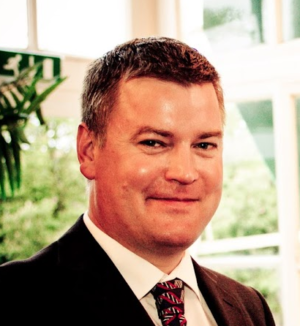
What is your research focus? What initially attracted you to your field?
My main research focus is new algorithms and applications of computational proteomics, ranging from workflows for large-scale analyses to the identification of biological species from mass spectra. The focus keeps shifting as there are so many ideas to explore! I was first attracted to the field in high school, where our chemistry teacher had us play a computer game where one had to sequence a peptide using a choice of chemical reactions and analyses, each with a different price tag. The goal was to find the correct sequence while spending as little cash as possible. Mass spectrometry was one of those analyses – and the most expensive one if I remember correctly. This must have been around 1990. I then did a summer internship in 1992, right after high school, exploring crystallization methods for MALDI, and I was firmly hooked on mass spectrometry.
What do you hope to bring to your journal?
I will bring my personal experience of computational methods in proteomics as well as an overview of the field informed through my work on software registries and the two special issues on software tools in the Journal of Proteome Research.
What are the major challenges facing your field today?
One of the major challenges, at least from a practical point of view, is closing the gap between the ‘best’ experiments and analyses published by experts and what can be achieved routinely by most users of the same instrument and software. This challenge is not unique to proteomics, but it is exacerbated by the complexity of the experiments and data analyses in our field.
What do you think is the most interesting and/or important unsolved problem in your field?
There are many exciting developments in massively parallel peptide sequencing that one day may challenge the dominance of mass spectrometry in the field. These new technologies also bring interesting computational problems that will need to be addressed. We should also make it easier to scale up data analyses so that anyone is able to contextualize their data or answer research questions by reusing data in public proteomics repositories, databases, and atlases. I am excited to see efforts now addressing the obstacles to making this a common practice.
Do you have a recent paper in an ACS journal that you’d like to highlight?
Benjamin Neely and I wrote a perspective for the Journal of Proteome Research looking at the early work in molecular phylogenetics comparing patterns of tryptic peptides in the light of current proteomics technology. We found it enormously rewarding to follow the literature trail back in time – and forward again, following in the footsteps of past researchers. And it was great to have a partner-in-crime to help pull me out when I was going too far down a rabbit hole of a literature trail.
Rewinding the Molecular Clock: Looking at Pioneering Molecular Phylogenetics Experiments in the Light of Proteomics
J. Proteome Res. 2021, 20, 10, 4640–4645
DOI: 10.1021/acs.jproteome.1c00528
Anything else you’d like readers to know about you?
I sometimes tweet about proteomics or mass spectrometry as @MagnusPalmblad.
***
Song Lin, Organic Letters
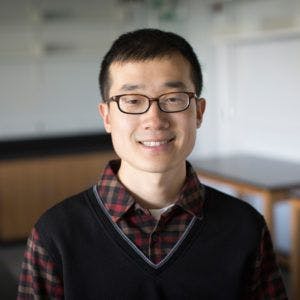
What is your research focus? What initially attracted you to your field?
My lab’s research focuses on advancing new reaction strategies to improve the efficiency and selectivity of organic synthesis. We explore fundamental principles of electrochemistry and radical chemistry to discover new organic reactions and uncover new mechanistic pathways. Electrochemistry has historically seen limited use in organic chemistry. However, it has a number of unique features that are not commonly encountered in traditional chemical synthesis, and the ability to harness such features for discovering new reactivity has always fascinated me.
What do you hope to bring to your journal?
I am excited to join a great editorial team with diverse professional backgrounds and hope to contribute to the journal’s success with my expertise in electrosynthesis, radical chemistry, and physical organic chemistry.
What are the major challenges facing your field today?
Discovering fundamentally new reactivity and new bond disconnection strategies are always exciting but challenging at the same time. In addition, gaining a deep understanding of reaction mechanisms using traditional and new physical/analytical tools is critical to modern organic chemistry research. Furthermore, the marriage of organic synthesis with technology and data science will undoubtedly expand the horizon of our field and lead to exciting new discoveries. All challenges are also opportunities for our field to grow.
What do you think is the most interesting and/or important unsolved problem in your field?
Understanding and predicting reaction outcomes in complex systems.
Do you have a recent paper in an ACS journal that you’d like to highlight?
Unlocking the Potential of High-Throughput Experimentation for Electrochemistry with a Standardized Microscale Reactor
ACS Cent. Sci. 2021, 7, 8, 1347–1355
DOI: 10.1021/acscentsci.1c00328
Anything else you’d like readers to know about you?
If I wasn’t a chemist, I would likely pursue a career in architecture. Building complex objects, from tiny molecules to magnificent skyscrapers, with both pleasing aesthetics and desirable functions, fascinates me.
***
Natalie Fey, Organometallics

What is your research focus? What initially attracted you to your field?
The main focus of my work in my group is on the computational study of organometallic catalysts aimed at improving our understanding of the mechanism of catalytic reactions and developing approaches for the screening and optimization of novel catalysts. In practice, this means that we study catalytic cycles for a relatively small number of systems chosen carefully to sample chemical space. We also use calculations to assess ligand, substrate, and catalyst properties for a larger number of systems, combining the two approaches to build predictive models. We collaborate a lot with synthetic chemists to validate and improve our predictions. I like it when reactions change color, so transition metal complexes were a good fit for me. However, when I first became interested in pursuing research in organometallic chemistry, computational studies were still a bit of an adventure and considered quite a risky undertaking. I’ve always been interested in using computing to best effect to support chemistry, but I initially combined it with a substantial synthetic task in my Ph.D. However, I was a bit of a liability in the lab (let’s blame a heady mixture of being tall, clumsy, and quite easily distracted by computers), so everybody heaved a sigh of relief when I changed direction to focus on computational studies. My interest in synthesis has continued to inform our approach, though, and now we want to use computational approaches as a driver for scientific discovery, still with a particular interest in applying computational and structural chemistry to the large-scale prediction and design of organometallic catalysts, but we also support chemical synthesis across a range of areas, from organic to materials chemistry.
What do you hope to bring to your journal?
There is a lot of excitement about using data-led approaches in chemistry, including in organometallic chemistry, at the moment. I hope to contribute some of my expertise in both computational chemistry and data analysis/model evaluation to the community, along with an appreciation of the value and robustness of molecular structures. Much of our understanding of chemistry ultimately relies on relating structures to properties, and computational studies are an important part of that.
What are the major challenges facing your field today?
At the computational end, it’s often a dearth of experimental data which we can use to really challenge and validate predictions made, although there have been some exciting developments in what you might call physical organometallic chemistry recently. Any experimental insights into what the catalyst actually is, along with reliable kinetics/barriers and some idea about what happens to the catalyst before and after the reaction, can improve mechanistic studies. We also need to leverage what we already know more effectively too, and that’s where data capture, curation, and exploitation come into their own.
What do you think is the most interesting and/or important unsolved problem in your field?
The activation of difficult bonds, ideally with earth-abundant transition metals supported by cheap ligands, has got to be up there somewhere! More immediately, we still need to figure out how we record and exploit all of the data we can now collect and then decide how to leverage it to the best effect.
Do you have a recent paper in an ACS journal that you’d like to highlight?
Building a Toolbox for the Analysis and Prediction of Ligand and Catalyst Effects in Organometallic Catalysis
Acc. Chem. Res. 2021, 54, 4, 837–848
DOI: 10.1021/acs.accounts.0c00807
Anything else you’d like readers to know about you?
When I start to get a sense of despair about all of the challenges stacking up in our future (climate, health, biodiversity, and how to keep everybody clothed, fed, warm and sane), I tend to remind myself that science gives us a way of addressing quite a lot of them. So we need to get the best and brightest working on this and support them to make this a viable and rewarding task. Nobody said it would be easy!
***
Belén Martín-Matute, Organic Letters
What is your research focus? What initially attracted you to your field?
My research focuses on developing catalytic approaches for selective organic synthesis. We study different redox reactions and reactions where carbon-carbon and carbon-heteroatom bonds are formed selectively. We work with homogeneous transition metal- and organo-catalysts, as well as with different heterogeneous catalysts, such as functionalized metal-organic frameworks (MOFs). Understanding the mode of action of the catalysts is one of our main interests.
What do you hope to bring to your journal?
I hope that my background in developing a broad variety of catalysts of different nature will attract new articles to Organic Letters that tackle major selectivity challenges. These include methods that can be applied to the late-stage functionalization of complex molecules and methods that provide outstanding levels of selectivity when using base metals or main group catalysts.
What are the major challenges facing your field today?
We cannot rely on fossil resources forever. And making chemicals from sustainable resources is very challenging. The arsenal of catalysts available today present serious limitations when, for example, used to create high-value organic compounds from highly oxygenated raw materials.
What do you think is the most interesting and/or important unsolved problem in your field?
Understanding the mode of action of heterogeneous catalysts is a major unsolved challenge. This includes understanding the role of the support/material that holds the catalytic species. These difficulties make that the use of heterogeneous catalysts in organic synthesis is still, to a large extent, based on trial/error approaches.
Do you have a recent paper in an ACS journal that you’d like to highlight?
We have developed a method for stereospecific 1,3-proton shifts based on the in-situ formation of ion pairs with induced noncovalent chirality:
Base-Catalyzed Stereospecific Isomerization of Electron-Deficient Allylic Alcohols and Ethers through Ion-Pairing
J. Am. Chem. Soc. 2016, 138, 40, 13408–13414
DOI: 10.1021/jacs.6b08350
Anything else you’d like readers to know about you?
I am the director of the Ph.D. education at our department, and I feel privileged to have the opportunity to discuss different aspects of research education with highly motivated students. Outside work, I enjoy family time and keep very busy on the weekends with orienteering competitions and ice-hockey training with the boys. We also enjoy traveling to visit our big family abroad.
***
